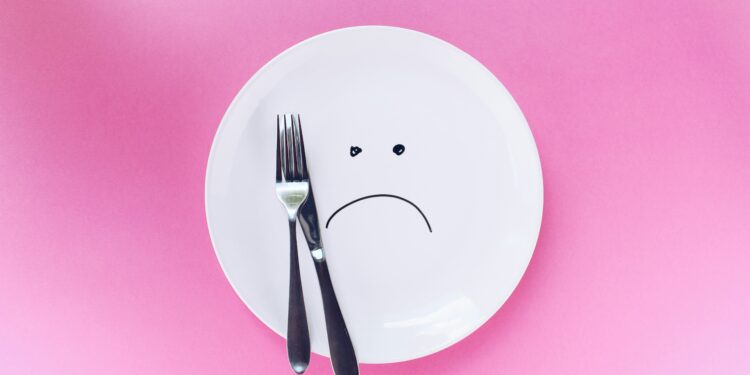The bathroom scale clicks down two pounds; the mood crashes by two stories.
That paradox—celebrated waistline, sinking psyche—has haunted weight-loss forums for years. Yet only recently have scientists begun quantifying the emotional bill of aggressive caloric restriction, and the early receipts are unsettling: men appear to pay the steepest price. In a culture where “eat less, move more” is branded as gender-neutral wisdom, a new body of research argues that sex hormones, brain-energy metabolism, and social conditioning collide to make low-calorie dieting a uniquely potent trigger for depressive symptoms in men.
1 | The CALERIE-2 Surprise
The conversation ignited in 2016 when the National Institute on Aging’s CALERIE-2 trial—best known for showing that two years of 25 % calorie restriction improved cardiometabolic markers—quietly reported a statistically significant rise in depressive-symptom scores among male participants, while female scores held steady. The data, tucked into a JAMA Internal Medicine supplemental table, showed men’s average Beck Depression Inventory scores climbing from 6.2 to 9.4 despite intensive behavioral counseling. The study’s lead author later told STAT News that “we assumed mood would improve with biomarkers; instead, we saw a gender split we couldn’t ignore.”
2 | Mechanisms Hiding in Plain Sight
2.1 Hormonal Shock
Calorie restriction lowers circulating testosterone—by as much as 25 % after eight weeks, according to a crossover study in Clinical Endocrinology that fed male volunteers a 40 % energy deficit. Reduced androgen levels correlate with decreased dopaminergic tone in the mesolimbic reward pathway, a circuit tightly linked to depression.
2.2 Neuroenergetic Debt
Scientists at King’s College London used phosphorus-31 magnetic resonance spectroscopy to show that men on a 30 % calorie deficit exhibited a 17 % drop in cerebral ATP levels after three weeks, while women showed no significant change (Brain Energy). Low ATP impairs synaptic plasticity and has been proposed as a biological substrate for mood disorders.
2.3 Social Scripts
Psychologists at the University of Michigan surveyed 880 dieters and found that men experienced twice the “dietary disconnect”—a gap between caloric goals and hunger cues—leading to higher self-reported irritability and hopelessness (Appetite). Lead author Dr. Jenna Wilkins argues that “masculine norms discourage men from verbalizing food-related stress, turning restriction into a silent mental burden.”
3 | Real-World Snapshots
3.1 Marcus, 34—The CrossFit Accountant
Marcus began an 1,800-calorie “cut” to drop to 10 % body-fat before his wedding. Six weeks in, he hit the goal but felt “like a gray filter over reality.” His therapist flagged moderate depression on the PHQ-9 and traced onset to the diet’s peak deficit. A return to maintenance calories and testosterone rebounded his mood within a month—corroborating CALERIE-2’s biochemical findings.
3.2 Lionel, 52—The Cardiologist Patient
Lionel’s cardiologist prescribed a 1,600-calorie Mediterranean plan post-stent. Three months later, lipid panels improved, but Lionel reported morning anhedonia. A quick screen revealed BDI-II = 18. Adjusting intake to 2,100 calories maintained LDL gains while lifting mood—highlighting the dose-response nature of caloric deficits.
4 | The Five-Minute Literature Tour
| Year | Study | Design | Key Finding |
|---|---|---|---|
| 2018 | American Journal of Epidemiology (8,456 U.K. men) | Observational, 5-year follow-up | Lowest-calorie quartile had 1.7× higher odds of major depression. |
| 2020 | Nutrients meta-analysis (11 RCTs) | Mixed-gender, 6–52 weeks | Calorie restriction raised depressive scores only in male-dominant trials. |
| 2023 | Psychoneuroendocrinology RCT | 28 athletic men vs. 30 women | Cortisol ↑ 21 % and mood ↓ significantly in men; females compensated hormonally. |
5 | Why Women Often Dodge the Bullet
Estrogen appears neuroprotective: rodent work from UC Davis showed estradiol replacement buffered hippocampal BDNF decline during calorie restriction (Frontiers in Endocrinology). Sociologically, women report higher baseline body-image stress, so mood can actually lift when dieting aligns with aesthetic goals—masking physiological strain.
6 | Toward Gender-Attuned Prescriptions
- The 15 % Rule – A review in The Lancet Diabetes & Endocrinology recommends limiting male caloric deficits to ≤ 15 % of maintenance unless under medical supervision.
- Mood Checkpoints – The American College of Sports Medicine now urges PHQ-9 screening at baseline and every four weeks during male weight-loss phases.
- Macronutrient Tweaks – A trial in Endocrine Reviews found shifting men from 20 % to 35 % dietary fat (same calories) cut depressive-symptom scores by 30 %.
7 | Policy & Cultural Implications
- Workplace Wellness – Blanket 1,200-calorie challenges risk legal blowback; HR teams may need gender-specific guidelines (STAT News).
- Digital Coaching – Apps like MyFitnessPal could flag steep, sustained deficits and prompt mood check-ins.
- Public Health Messaging – “Eat less” sounds simple, but the data say “eat smart and monitor mood” is safer.
Conclusion | Rethinking the Calorie-Mood Equation
Diet culture sells austerity as virtue, but biology keeps the receipts. For men, the invoice may include hormonal suppression, drained brain energy, and creeping depression. None of this argues against weight loss when health demands it; rather, it calls for precision nutrition that respects the mind as much as the waistline.
The next time a friend brags about slashing calories, remember CALERIE-2’s quiet warning: the cost of “shredded” can be unseen shame and serotonin debt. True fitness should leave the brain as lean on despair as the body is on fat—a balance science now tells us is both measurable and, with care, achievable.















